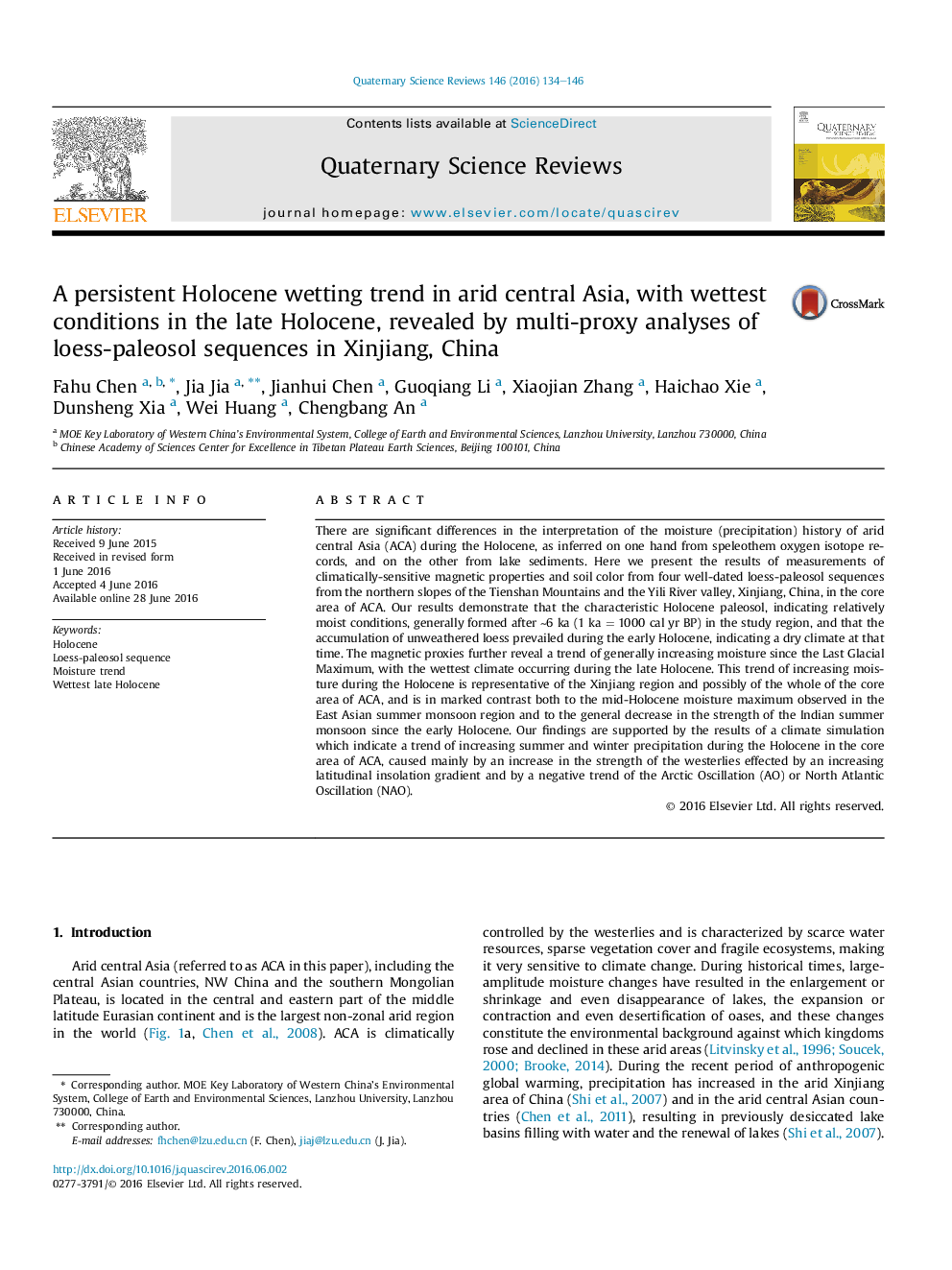| Article ID | Journal | Published Year | Pages | File Type |
|---|---|---|---|---|
| 4735269 | Quaternary Science Reviews | 2016 | 13 Pages |
•The Holocene paleosol was formed after ∼6 ka BP in Xinjiang, China, the core area of ACA.•A persistent Holocene wetting trend was found in the core area of ACA, with the wettest conditions in the late Holocene.•The moisture dynamics in the core area of ACA may have close link with the westerlies, AO, NAO, and CGT during Holocene.
There are significant differences in the interpretation of the moisture (precipitation) history of arid central Asia (ACA) during the Holocene, as inferred on one hand from speleothem oxygen isotope records, and on the other from lake sediments. Here we present the results of measurements of climatically-sensitive magnetic properties and soil color from four well-dated loess-paleosol sequences from the northern slopes of the Tienshan Mountains and the Yili River valley, Xinjiang, China, in the core area of ACA. Our results demonstrate that the characteristic Holocene paleosol, indicating relatively moist conditions, generally formed after ∼6 ka (1 ka = 1000 cal yr BP) in the study region, and that the accumulation of unweathered loess prevailed during the early Holocene, indicating a dry climate at that time. The magnetic proxies further reveal a trend of generally increasing moisture since the Last Glacial Maximum, with the wettest climate occurring during the late Holocene. This trend of increasing moisture during the Holocene is representative of the Xinjiang region and possibly of the whole of the core area of ACA, and is in marked contrast both to the mid-Holocene moisture maximum observed in the East Asian summer monsoon region and to the general decrease in the strength of the Indian summer monsoon since the early Holocene. Our findings are supported by the results of a climate simulation which indicate a trend of increasing summer and winter precipitation during the Holocene in the core area of ACA, caused mainly by an increase in the strength of the westerlies effected by an increasing latitudinal insolation gradient and by a negative trend of the Arctic Oscillation (AO) or North Atlantic Oscillation (NAO).
